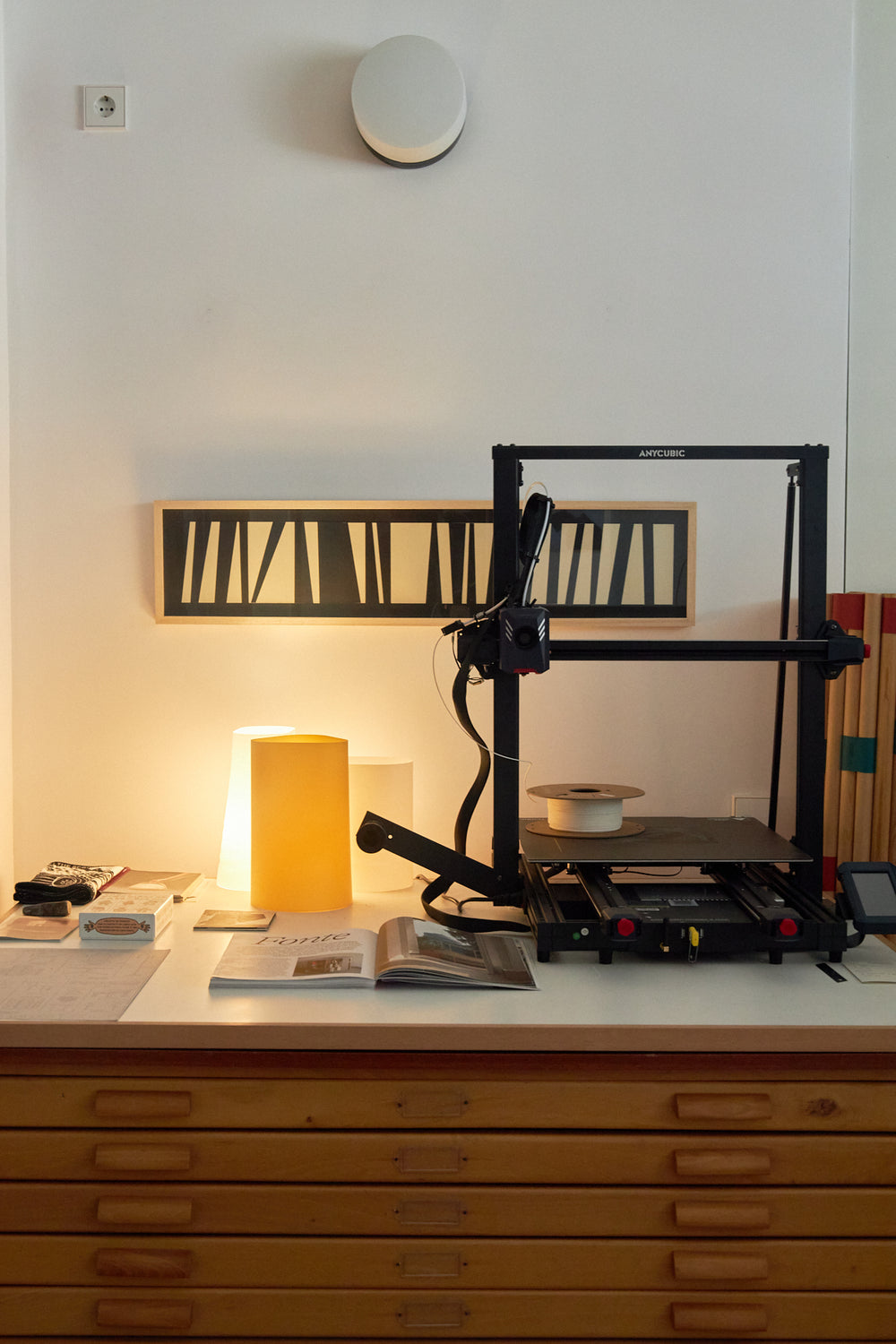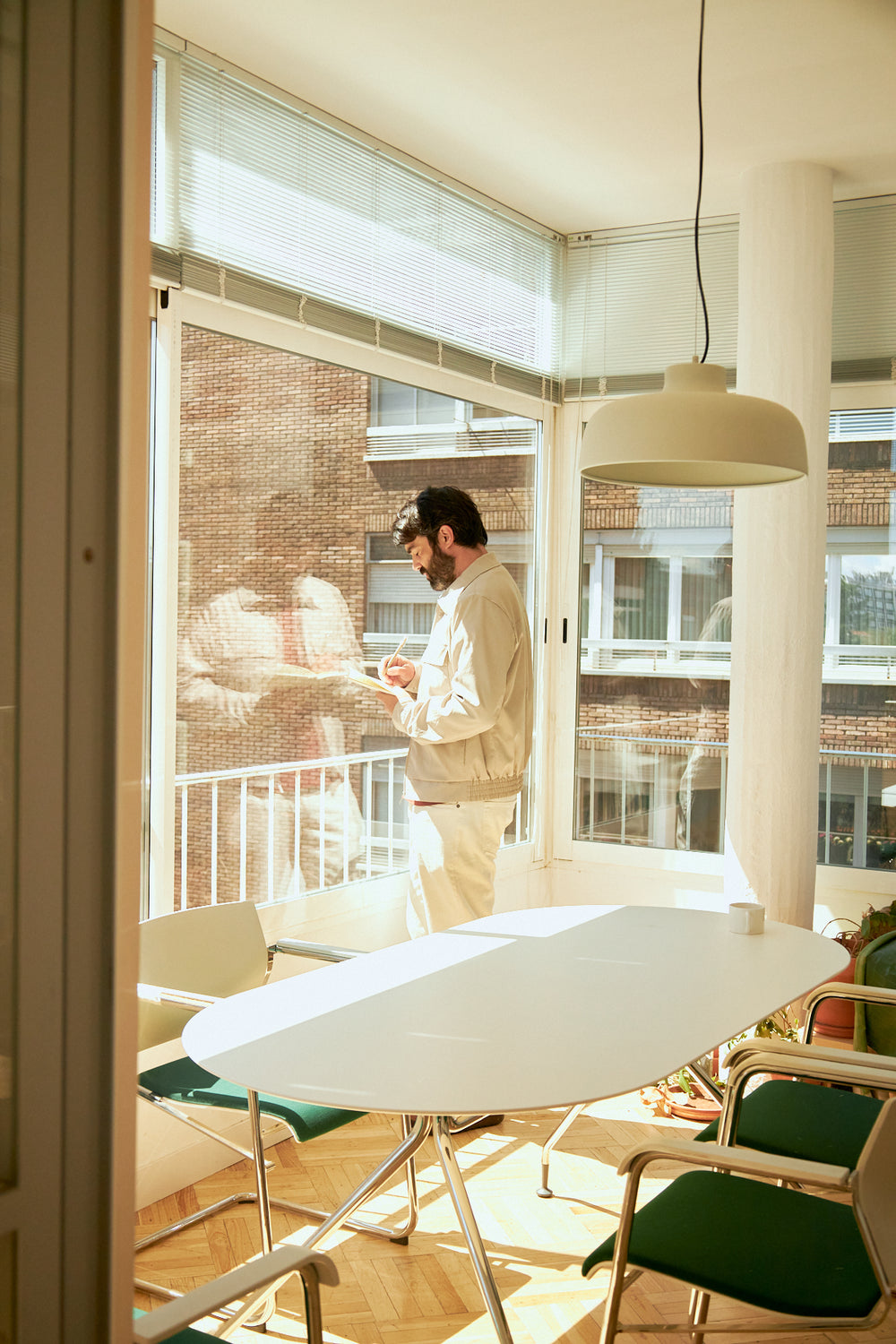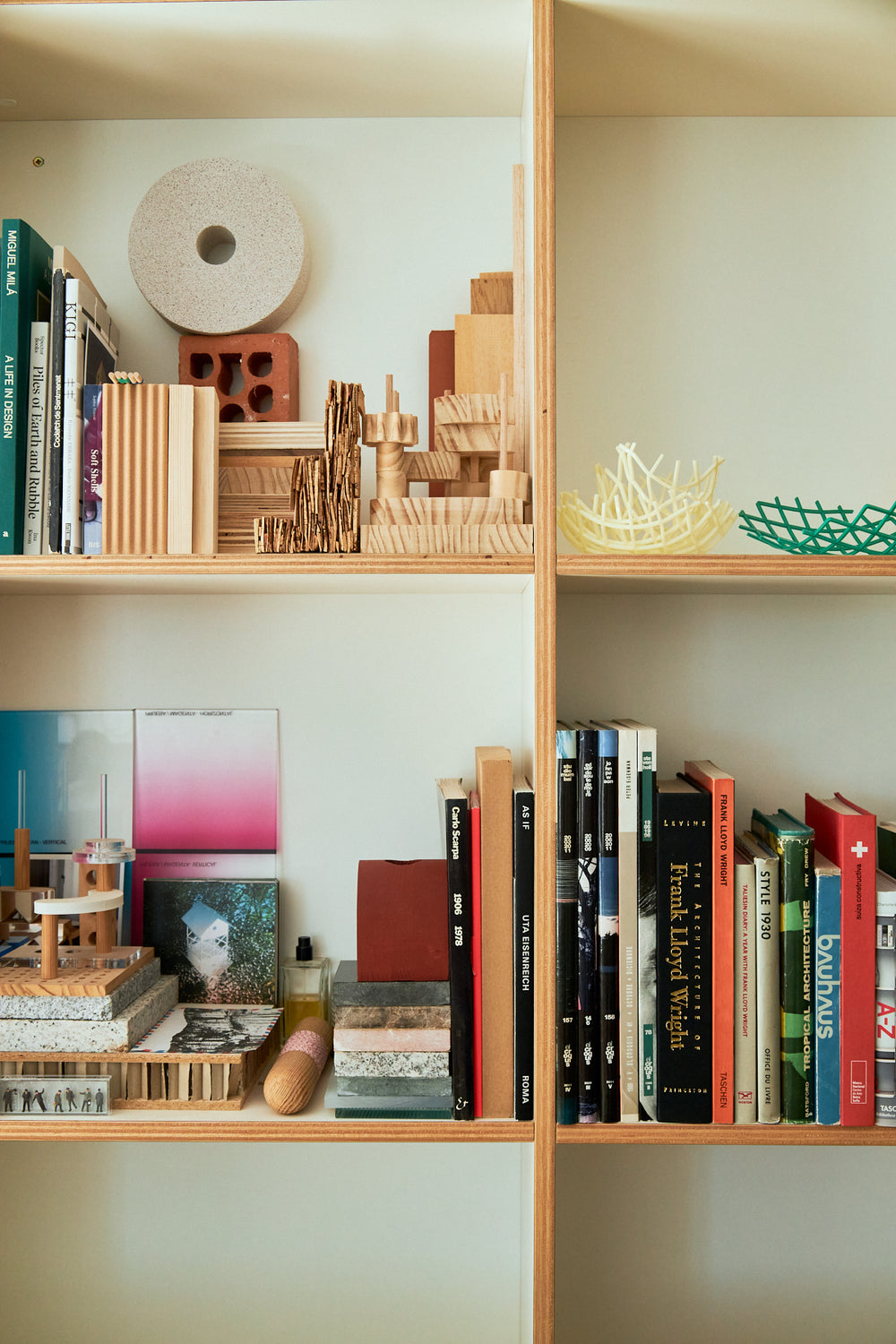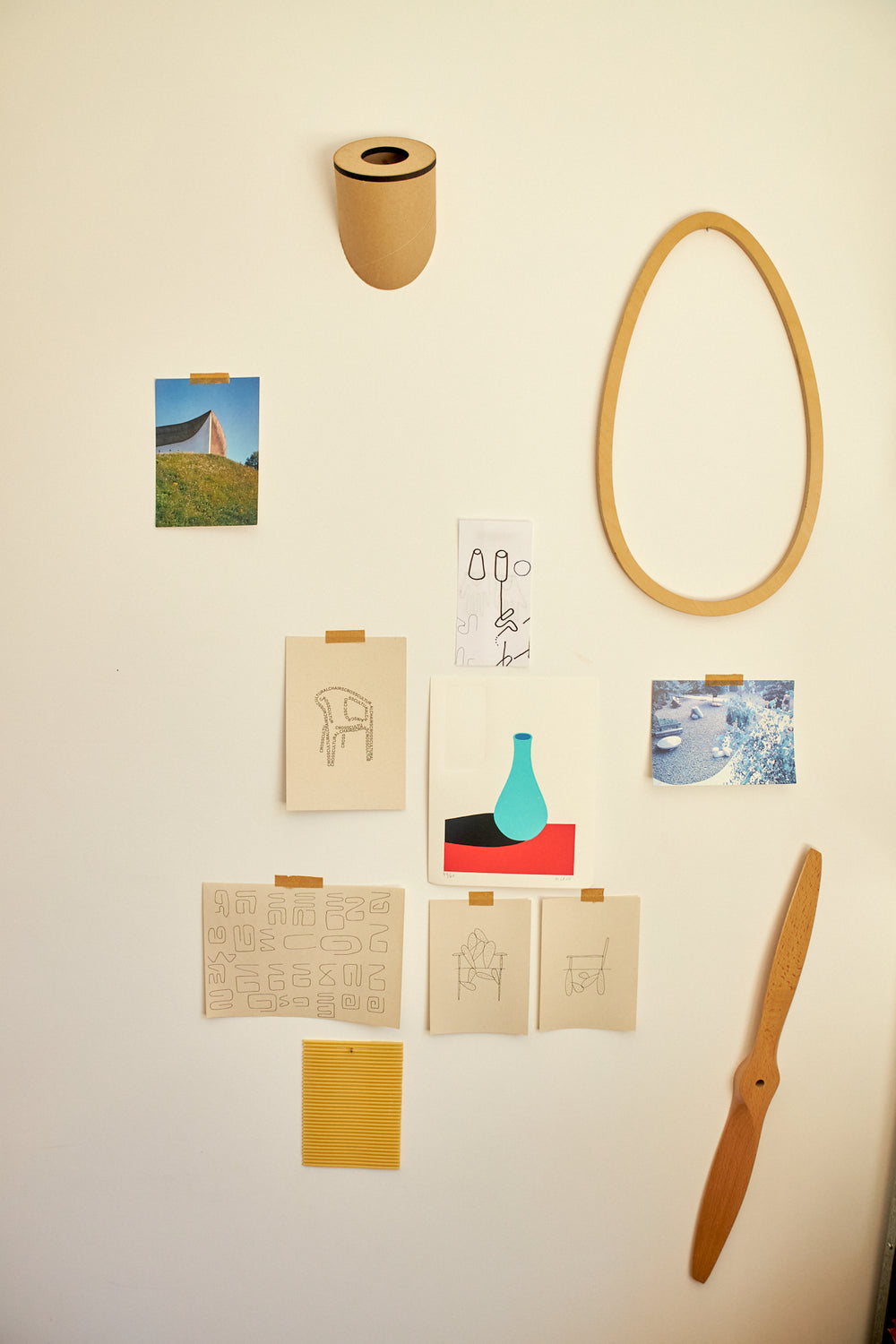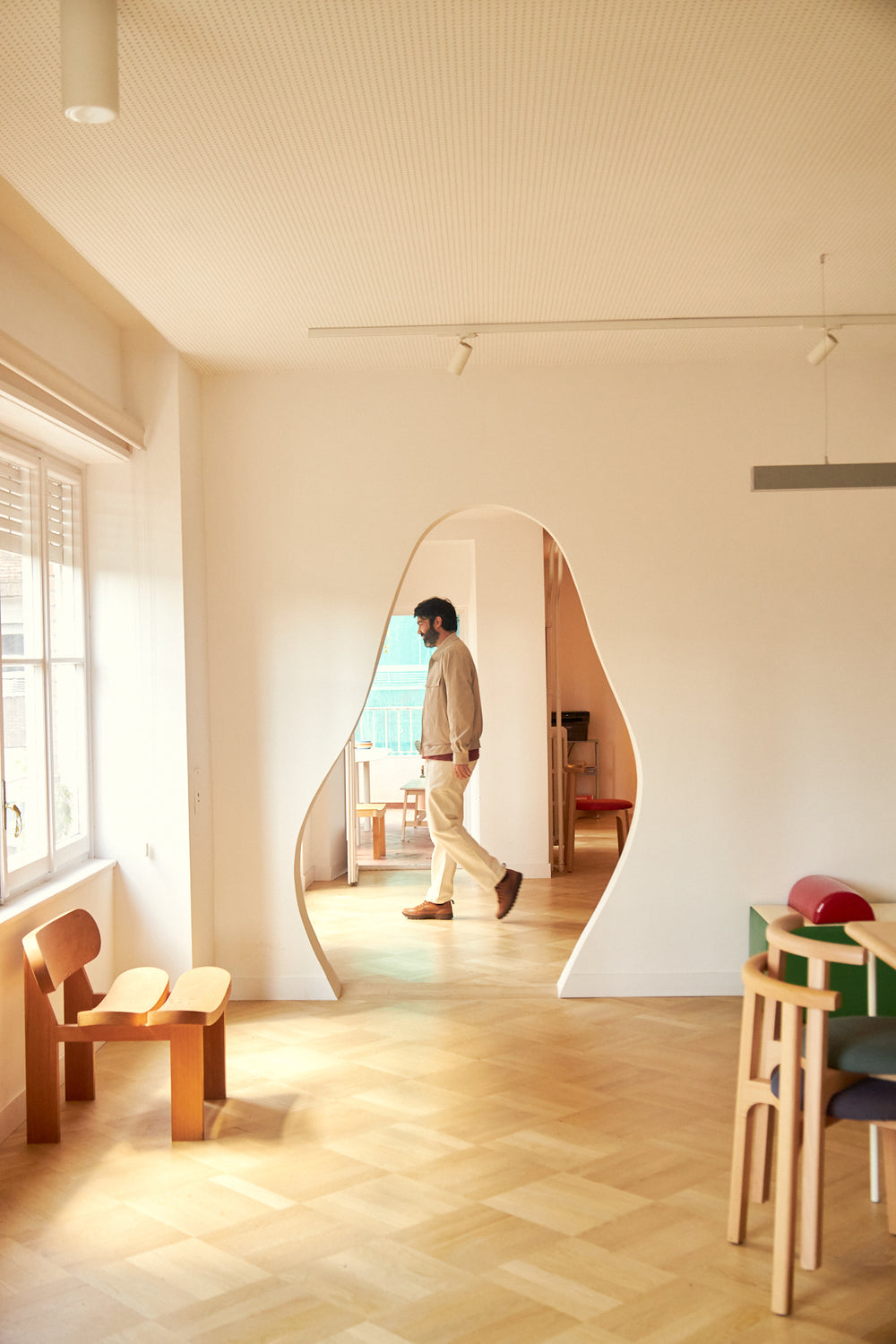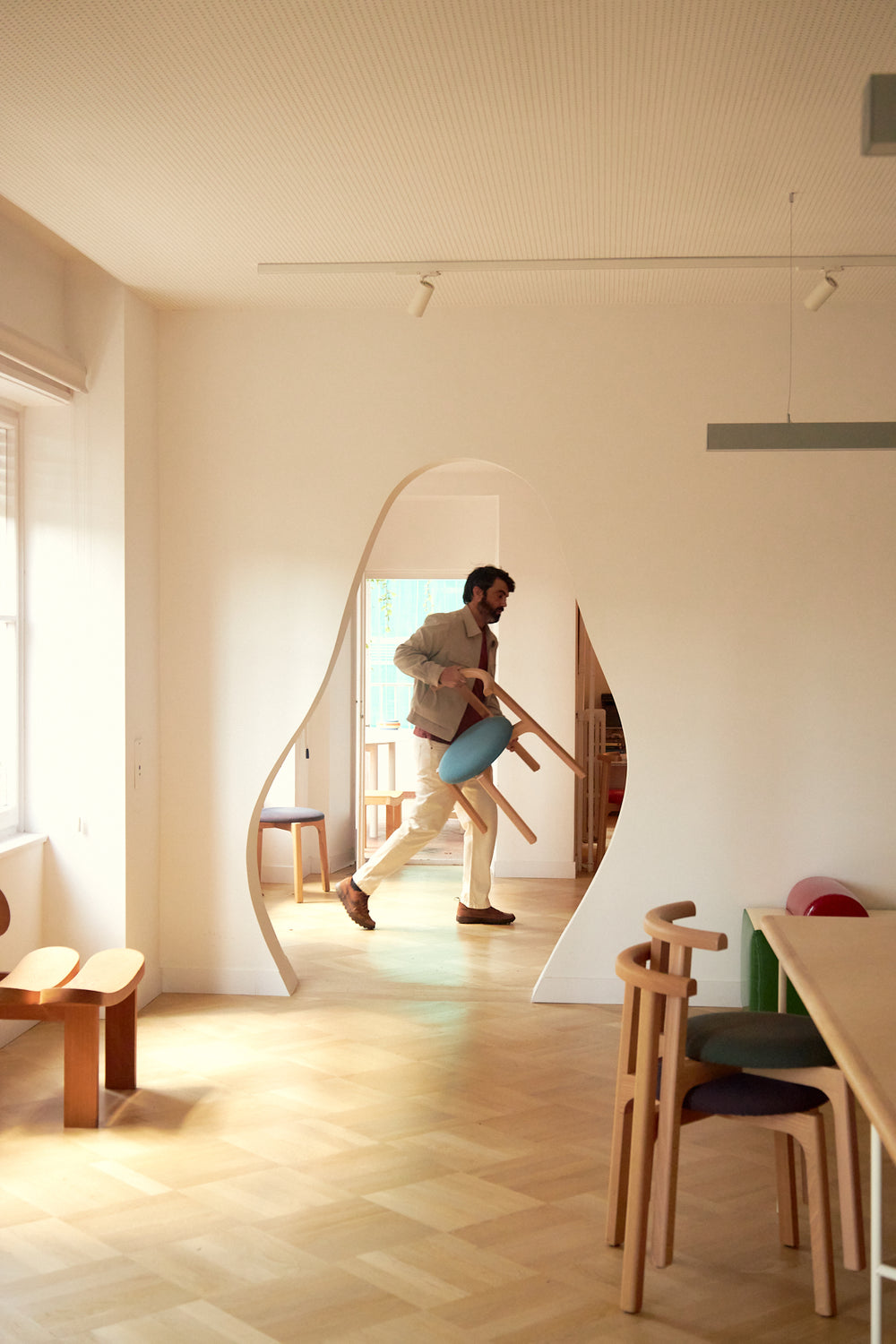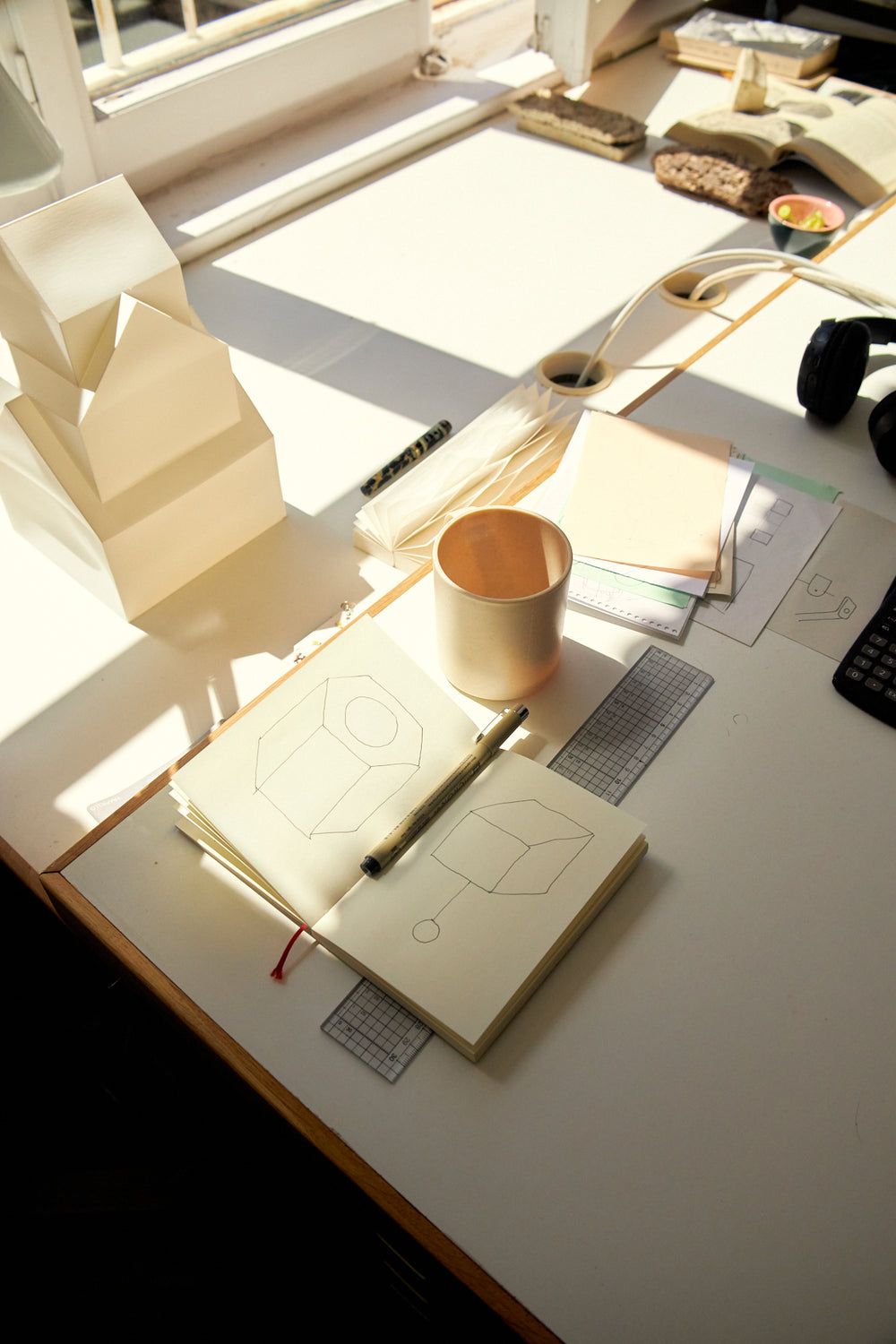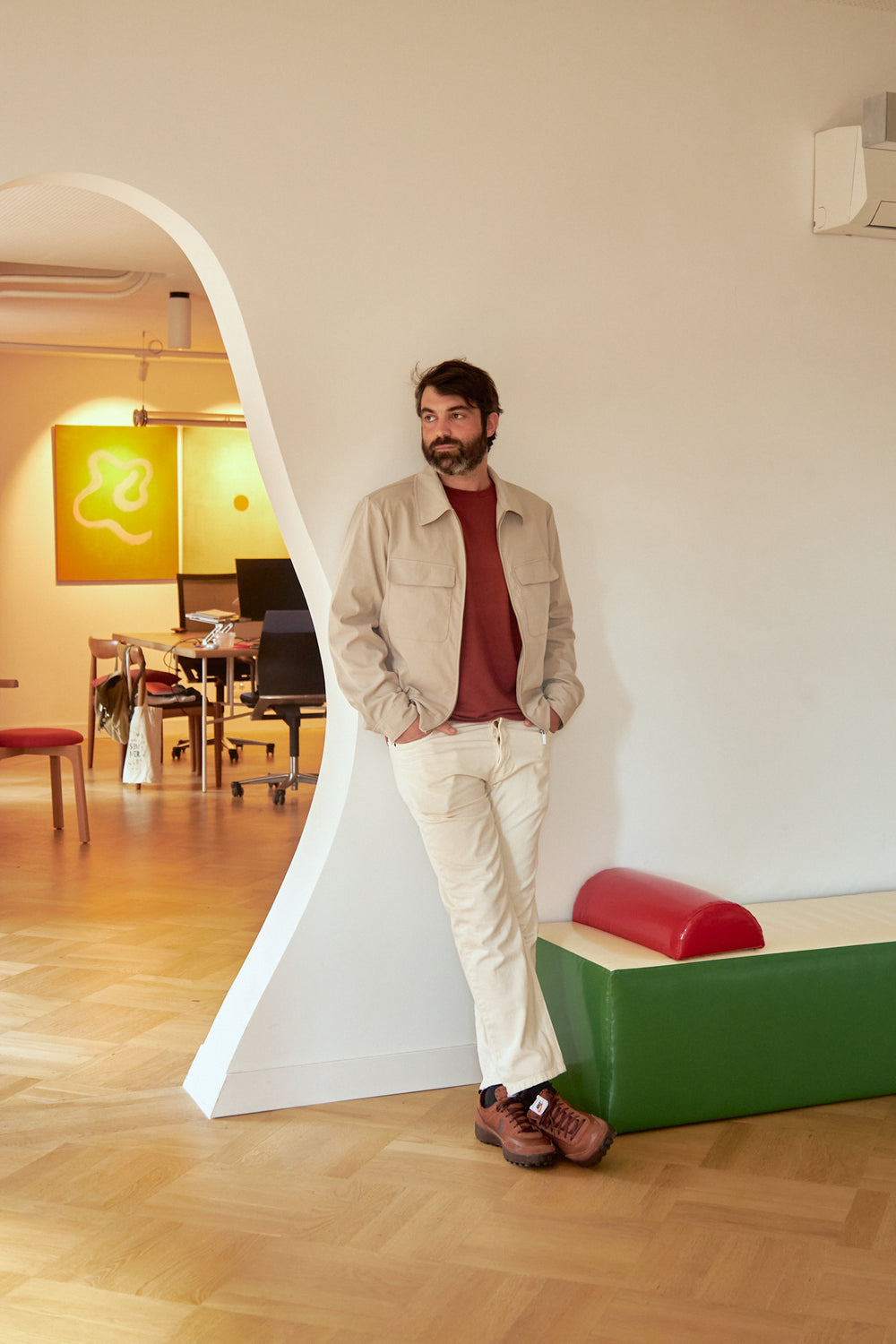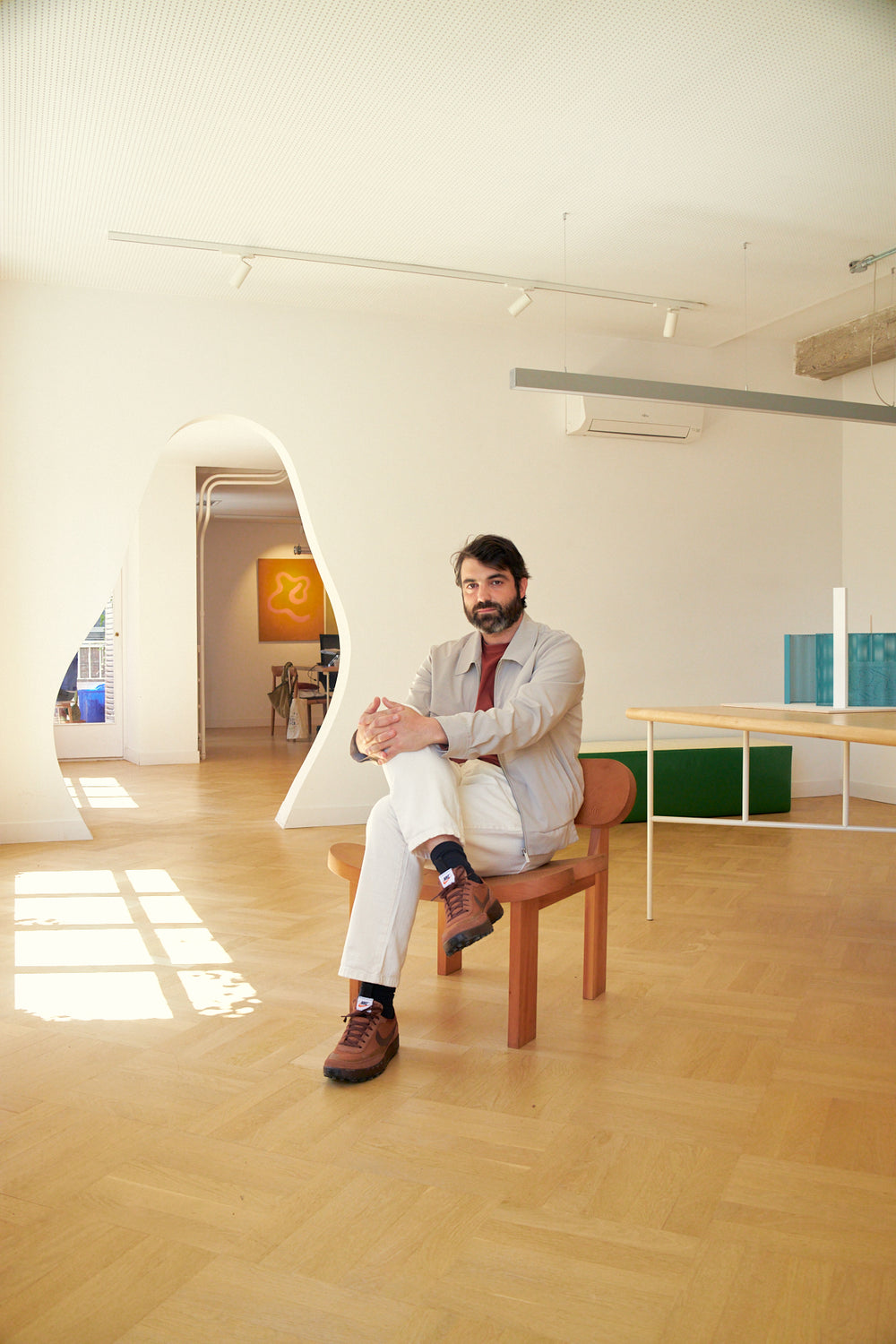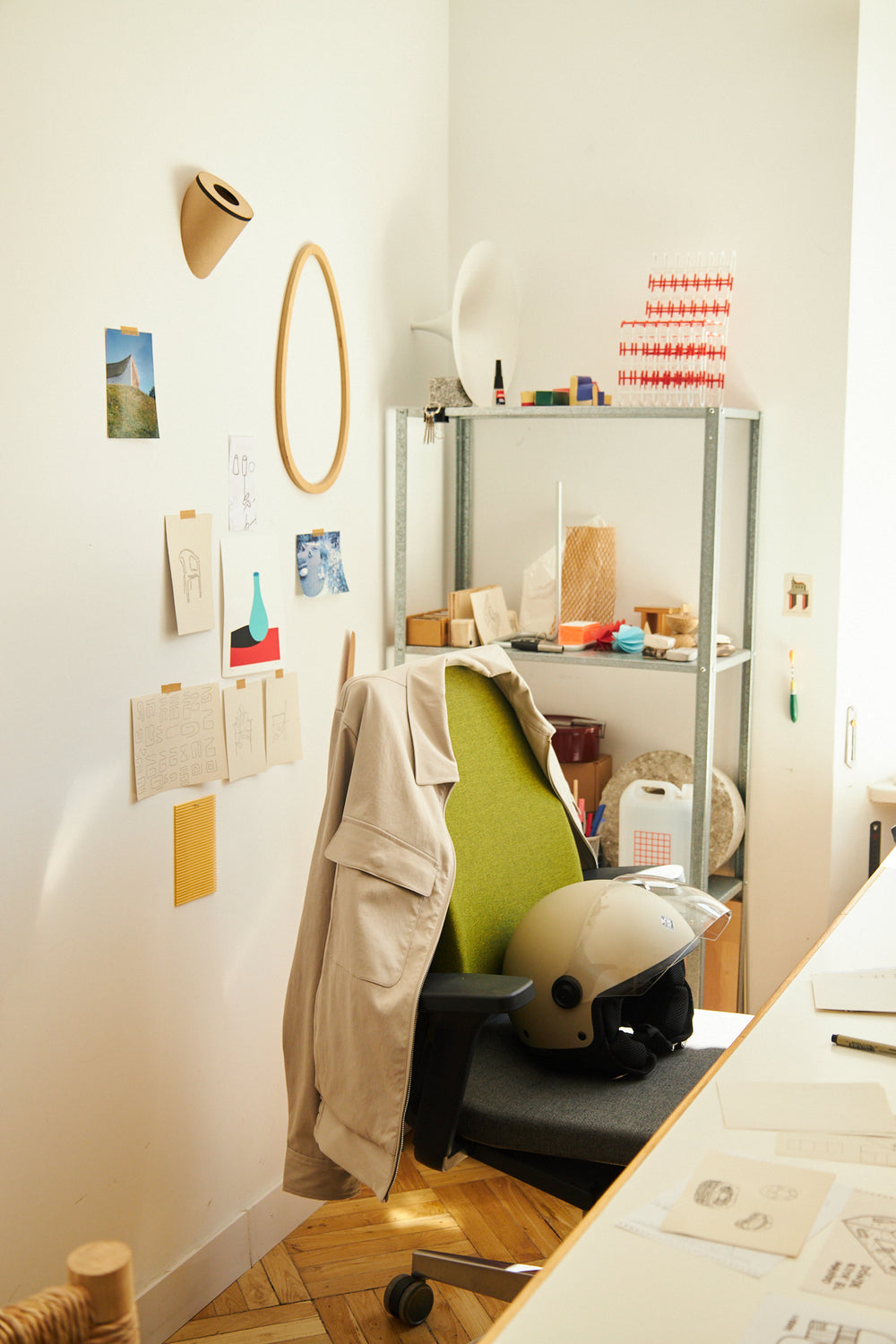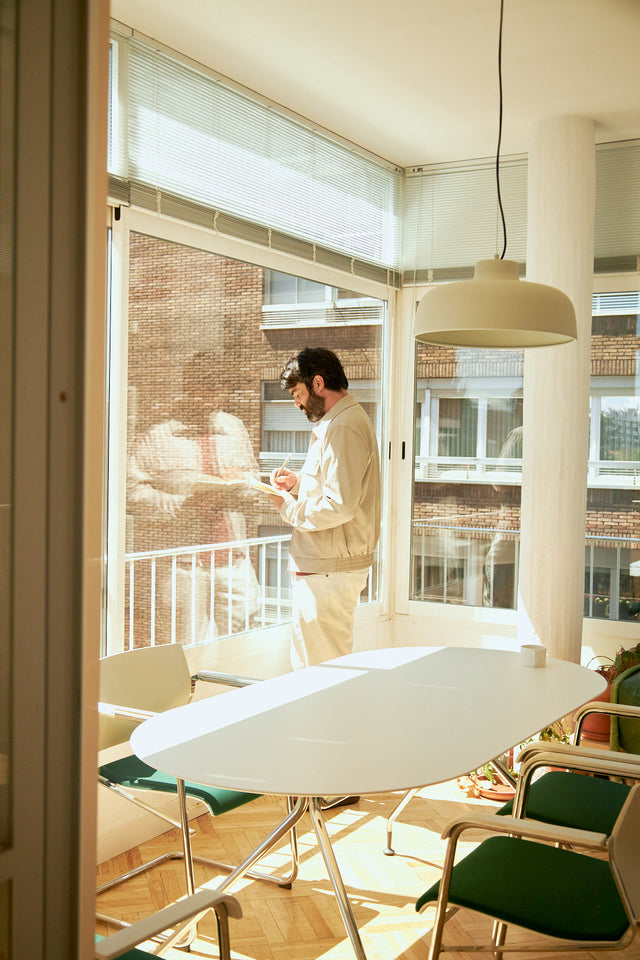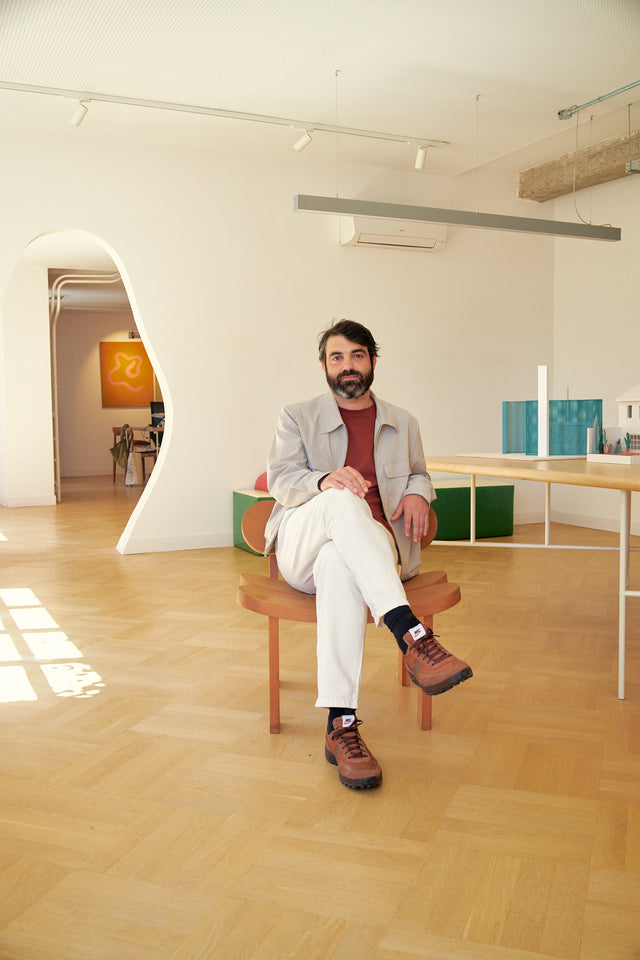{"ONE"=>"{{ COUNT }} PRODUCT", "OTHER"=>"{{ COUNT }} PRODUCTS"}
SOME DESIGN FROM FUNCTION, OTHERS FROM AESTHETICS. GUILLERMO TRAPIELLO DESIGNS FROM THE QUESTION: HOW DO WE INHABIT THE WORLD? HOW DO WE RELATE TO OBJECTS, SPACES, MATERIALS? A SPECULATIVE, REFLECTIVE, AND CRITICAL PRACTICE.
FROM HIS STUDIO IN MADRID —AND HIS WORKSHOP IN TRUJILLO— HE OPERATES IN THAT SUBTLE CROSSROAD BETWEEN ARCHITECTURE AND FURNITURE DESIGN, EXPLORING THE EVERYDAY WITH A POETIC AND EXPERIMENTAL EYE. HIS APPROACH BLENDS RESEARCH, PLAY, CRAFTSMANSHIP, AND A CONSTANT OBSESSION WITH MATERIALS AND STRUCTURES, CREATING PIECES THAT INVITE YOU TO LOOK TWICE, TO INTERACT, TO THINK.
AT THE (REAL) GARCIA, WE SHARE THAT SPIRIT: DESIGNING FROM WHAT’S ESSENTIAL, HONORING THE PROCESS, AVOIDING THE SUPERFLUOUS. THAT’S WHY WE SAT DOWN TO TALK.
NOT TO DEFINE HIS WORK, BUT TO KEEP EXPLORING IT.
WHERE CURIOSITY DWELLS
01 YOU SAY THERE ARE ALREADY TOO MANY THINGS, AND IF SOMETHING NEW IS MADE, IT HAS TO BE WORTH IT. WHAT MUST AN OBJECT HAVE IN ORDER TO DESERVE TO EXIST?
I do think there are way too many things. We’re flooded with iterations, with millions of objects. I don’t believe everything has already been done, but there is a lot already made—and much of it is very bad. And perhaps, to stand out from that sea of monotony, what we can do is create things that are well produced, carefully crafted in their processes and materials, and that tell some kind of story that maybe hasn’t been told yet.
02 WE LIKE TO THINK OF THE (REAL) GARCIA’S IDENTITY AS A CONSTANT JUXTAPOSITION BETWEEN WORLDS: MEDITERRANEAN AND NORDIC, FORMAL AND INFORMAL, TRADITION AND INNOVATION. WHAT WORLDS CONVERGE IN YOUR WORK?
I always see creation—whether it’s in fashion, product design, or drawing—just like in music, when a DJ mixes samples, or in fusion cuisine, when a chef blends flavors. There isn’t one single right combination. I think it’s about experimenting.
In my case, for example, the Oriental world comes through a lot, because it’s very different from what we see in the West, and I find it fascinating. I like mixing it with something wilder, like the American world, the world of play, the 90s. That’s when new things happen—when you merge worlds that wouldn’t normally meet, and you fuse them into something entirely new.
03 WHEN YOU FIRST DISCOVERED THE (REAL) GARCIA, WAS THERE ANYTHING THAT PARTICULARLY RESONATED WITH YOU? THE ARCHITECTURAL IDENTITY, THE FUNCTIONALITY AND QUALITY OF THE GARMENTS, THE MINIMALIST AESTHETIC?
What I really liked about THE (REAL) GARCIA was the honesty in how the brand is presented, in the product line, in the space itself. I think it’s all super coherent and creates a really interesting intersection between the industrial and the Mediterranean.
04 WHAT’S YOUR RELATIONSHIP WITH CLOTHING IN YOUR DAY-TO-DAY LIFE? IS IT FUNCTIONAL, EMOTIONAL, TOTALLY ACCIDENTAL…?
My relationship with clothing is functional, but it’s also about identity—and I’m increasingly aware that function and identity are deeply intertwined.
In the end, I’m a designer but also a craftsman—I make prototypes in my workshop—and how I dress has a direct influence on my daily life and on who I am.
05 WHAT ARE YOUR AMBITIONS AND GOALS AT THIS MOMENT IN TIME? DO YOU ASPIRE TO A “MAGNUM OPUS” OR DO YOU PREFER EACH PIECE TO BE PART OF A WHOLE THAT REFLECTS YOUR IDENTITY AND ARTISTIC INTENTION?
I’m more interested in building a career that’s a sum of small goals. I see design—of objects, of “things” (I always say I’m a thing-maker)—as a collection of discoveries. That’s what fuels my work. Not so much solidifying what I’ve already done or chasing a single great work, but rather continuously creating, exploring many materials, formats, typologies, different teams…
For me, it’s about being able to keep doing what I do now, forever.
06 AT THE (REAL) GARCIA, WE DESIGN FROM STRUCTURE AND RAW MATERIAL, NOT FROM DECORATION. WHAT WOULD YOU SAY IS THE FOUNDATION OF YOUR DESIGN APPROACH?
What Adolf Loos said about ornament and crime—I do share that idea. But I also understand that within ornament, you can find ways of storytelling. So if something isn’t purely structural but tells a story, for me it’s no longer ornament—because that something becomes a key actor.
07 IS THERE ANY MATERIAL, FORM, INSPIRATION, OR TREND YOU’RE OBSESSED WITH LATELY?
I’m not sure if there’s anything that’s specifically influencing me right now. I draw inspiration from gastronomy, music, Japan, contemporary design… I don’t have one thing that stands out at the moment. I think it’s still the usual mix—but mashed together more wildly.
08 IF YOU WERE TO DESIGN A GARMENT OR A COLLECTION WITH US, WHAT KIND OF PIECE DO YOU THINK WOULD RESONATE WITH YOUR IDENTITY AND AESTHETIC?
If I had the opportunity to work with THE (REAL) GARCIA on a collection or piece, the first thing I’d want to do is learn about how the garments are made—what kinds of textiles can be used, what kinds of materials, of seams…
What I’d really enjoy is letting my curiosity for materials lead the way and seeing where that takes me.
That’s what usually happens in my work. I don’t really know the final shape or object from the start—it’s more like playing in a park to see what comes out.
09 WHAT WOULD YOU LIKE SOMEONE TO THINK WHEN THEY ENCOUNTER ONE OF YOUR PIECES FOR THE FIRST TIME?
I like the idea that the piece doesn’t need a theoretical discourse to be understood. That someone just approaches it—whether it’s a chair, a table, an object—and instantly knows what it’s for. Because it’s the object itself saying, vividly: “Use me this way.”
What I’d want is for someone to grasp what the object is about without me having to explain it.
10 SINCE OUR OPENING, WE’VE HAD ONE OF YOUR MOST ICONIC PIECES IN OUR PHYSICAL STORE: THE KANJI STOOL. WHAT DOES THAT KANJI MEAN AND WHAT WERE YOU TRYING TO EXPRESS THROUGH THE PIECE?
The Kanji Stool is a funny one because kanji is an ideogram that comes from Chinese, and is now used in Japanese. This particular one means “sky” or “heaven.”
If you look at it closely, the kanji forms the silhouette of a human with the sky above them—that’s its meaning: the paradise of the sky.
We thought it was a fun idea to make a seat that means “sky,” so you could literally sit in the sky. And also because it’s a figure that supports you.
FULL SESSION
